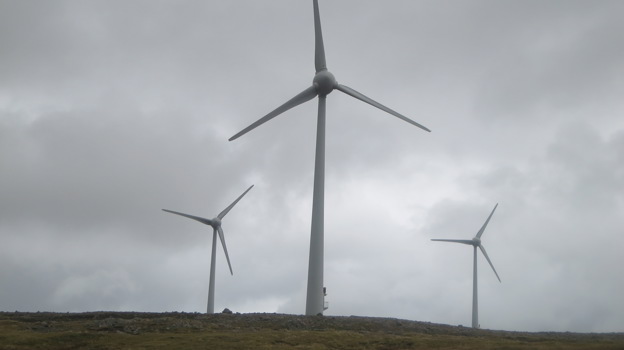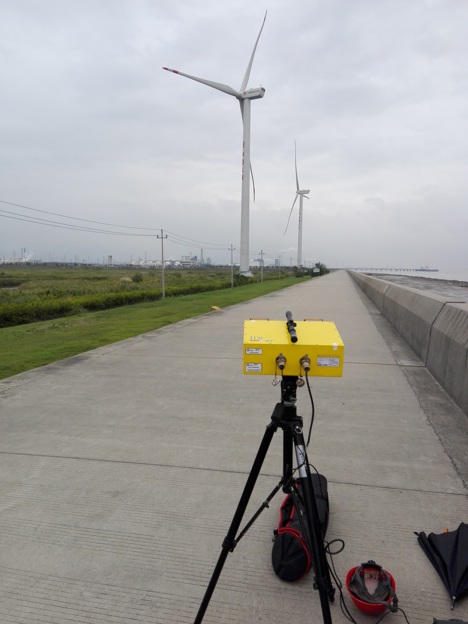
Mátingar av avbending í vindmyllubløðum
Gethin Wyn Roberts hevur fyri kortum verið samhøvundur á vísindaligari grein, ið viðger nýtslu av ”ground based radar (GBR) systems” til at máta avbendingar í vindmyllubløðum.
Les tíðindi á enskum her:
Deflection Monitoring of Wind Turbine Blades
Gethin Wyn Roberts recently co-authored a paper discussing the use of ground based radar (GBR) systems to enable the measurement of the deflections of wind turbine blades and towers. GBR is a relatively new and powerful surveying tool and is a radar based terrestrial remote sensing imaging system. The tripod based radar system is very mobile and allows non-contact measurements to be made. Measurements are typically of the order of 100-400 Hz acquisition frequency, and at the sub millimeter measurement resolution.
Currently there is around a 22% annual cumulative increase in the globally installed wind energy capacity. Existing research shows that 1 in 8 and 1 in 61 wind turbine face blade related down time or failure, respectively.
GBR is increasingly being used as a surveying tool to measure deformations either over long periods of time, in particular landslides, subsidence, rock falls, or rapid deflections, such as bridges and structures. The paper discusses the use of such technology to measure the deflections of wind turbine blades during the design, testing and in-operation stages. This in turn could be used as part of a structural health monitoring system to monitor health characteristics, and allow early warning of potential failures. Such monitoring could provide early detection of fatigue damage of the in-field wind turbine and tower.
Radar (Radio Detection and Ranging) uses short bursts of radio energy that are transmitted and reflected from the target as an echo. Directional antennas are used in radar to transmit the pulse and receive the echo. The attraction of GBR comes from its ability to operate in any weather or light conditions, work day and night, its better spatially‐distributed information and ability to gather movements of fast and slow moving objects at the sub-millimetre level of precision in a non-contact and non-intrusive manner.
The paper “A review of ground-based radar as a non-contact sensor for structural health monitoring of in-field wind turbine blades” is published in the journal Wind Energy, published by John Wiley and Sons ltd.
This is part of a larger project and a PhD research project at the University of Nottingham Ningbo China that Gethin is co-supervising. This is funded by the International Doctoral Innovation Centre, Ningbo Education Bureau, Ningbo Science and Technology Bureau, and the University of Nottingham. This work was also supported by the Ningbo Science and Technology Bureau as part of the International Academy for the Marine Economy and Technology (IAMET) project Structural Health Monitoring of Infrastructure in the Logistics Cycle (2014A35008). It was also supported by Zhejiang Provincial Natural Science Foundation of China under Grant No. LY16D040001”.
https://doi.org/10.1002/we.2252

- 25.11.2024 Setrið FøroyamálsdeildinKyn, postkolonialisma, søga og bókmentirFráfaringarhald fyri Maluni Marnersdóttur, professara&nbs...
- 22.11.2024 Setrið Søgu- og samfelagsdeildinNýggj frágreiðing um Føroyar og RusslandFríggjadagin 29. november leggur Fróðskaparsetur Føroya n...
- 19.11.2024 Setrið NámsvísindadeildinBókaútgáva: Kommunur í eini broytingartíðSámal Matras Kristiansen, samfelagsfrøðingur og námslekta...
